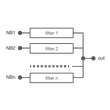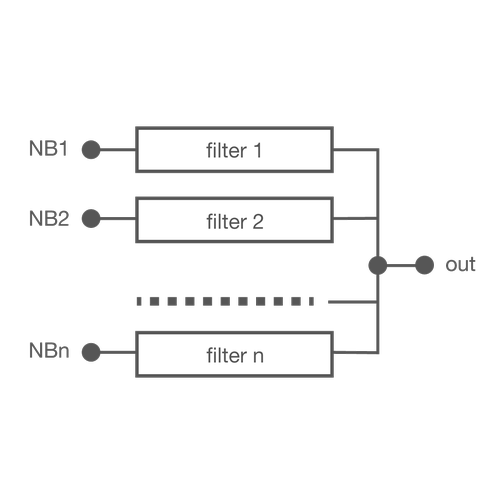SPINNER Combining Units for best radio frequency networks performance
Combining units are essential components in radio frequency networks, used to merge signals from multiple sources or split signals into multiple paths while maintaining signal integrity. All combiners work in bi-directional mode and can therefore be used to combine and split the transmitted and received signals.
The 2-way starpoint combiner band 3 DAB 300 W per input ensures optimal performance for signal transmission between transmitter and antenna in broadcast stations.
A starpoint combiner provides a central unit where multiple signals converge, typically used in star topology networks to manage, and distribute signals effectively. A starpoint combining system is designed to centralize the connection point where multiple RF signals converge. This system effectively distributes or combines signals from multiple sources, often in a star topology. It ensures efficient signal management and distribution across the network, which is crucial for maintaining the quality and reliability of broadcast channels within dense and complex RF environments.
Starpoint combiners are usually designed as 2- or 3-way combiners and require a minimum spacing of one channel or one DAB block in between.
Transmitters can be isolated from each other by connecting a bandpass filter to each output. To achieve good matching for the operating channels, the outputs of these filters must be connected via a suitable matching network.
Frequency changes or extensions are difficult to accomplish with combiners of these kinds because the matching networks have to be optimized for the new frequencies.
Outstanding RF characteristics, best possible passive intermodulation and VSWR
The 2-way starpoint combiner band 3 DAB 300 W per input enables you to transmit high-frequency signals reliably and flawlessly with optimum protection of your sensitive equipment in a power range up to 300 W (per input) with maximum passive intermodulation (IM3).
It supports the use of the following frequency bands : Band 3
The positive characteristics are briefly summarised: compact design as 19" slide-in unit, for 1.54 MHz block width, integrated mask filters for DAB and T-DMB, temperature compensated, .
The 7-16 connector has become the most widely used coaxial connection system for mobile communication systems, due to its excellent mechanical and electrical properties. In order to achieve the industry leading intermodulation performance SPINNER applies silver-plating on all inner and outer conductor parts of the standard connector. As a supporting measure, we use exclusively non-magnetic materials, and we have minimized the number of RF contact points. The connection is especially suited for transmitting medium or high power indoors and outdoors.



